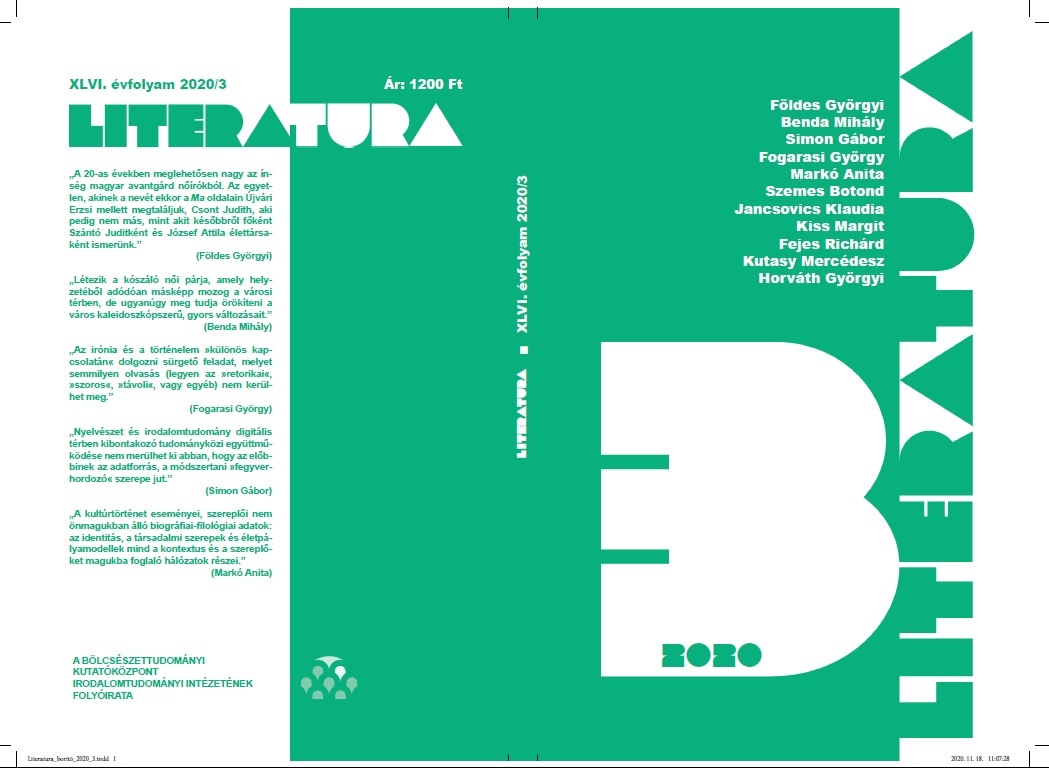„Úgy tetszett, Páris szívének a lüktetését érzem saját fáradt, vergődő, hazavágyó, de élni csak itt tudó szívemen”
Delphine de Girardin, Bölöni Györgyné és M. Hrabovszky Júlia Párizs-leírásairól
Absztrakt
„It felt the heart of Paris throbbing in my own heart, that is tired, agonizing and homesick, but cannot live anywhere else but here” – Images of Paris in the works of Delphine de Girardin, Mrs. György Bölöni, and Júlia M. Hrabovszky
This essay re-examines the figure of the male flâneur and suggests that one French (Delphine de Girardin) and two Hungarian women writers of the late 19th century (Júlia M. Hrabovszky and Mrs. György ’Itóka’ Bölönyi) can be categorized as flâneuses as they stroll through Paris. Originally, the figure of the flâneur was tied to a specific time and place: Paris, the capital city of the nineteenth century. The most well-known tribute to the flâneur of the nineteenth century is the prose and poetry of Charles Baudelaire. For this French poet, there is no doubt that this figure is male. Women could not have been flâneuses in this century, not only for societal reasons, but because they were dissimilar to the definition of the ideal flâneur, unable to ramble through the city. Delphine de Girardin, Júlia M. Hrabovszky and Itóka were living in Paris and writing essays about the culture and the everyday life of the capital. They also wrote memoirs where they depicted Paris. In this paper I will demonstrate that for these women, ‘flânerie’ was not only a means of relating to space, but also a way of writing. Through structural, thematic and poetic analysis of these women writer’s literary works, I plan to prove that ‘flânerie’ is not only the theme, but also the method in their writings. As a methodological necessity, this essay embraces archival data and other historical sources. It also draws from the seminal writings of cultural philosophers Walter Benjamin, Siegfried Kracauer and



